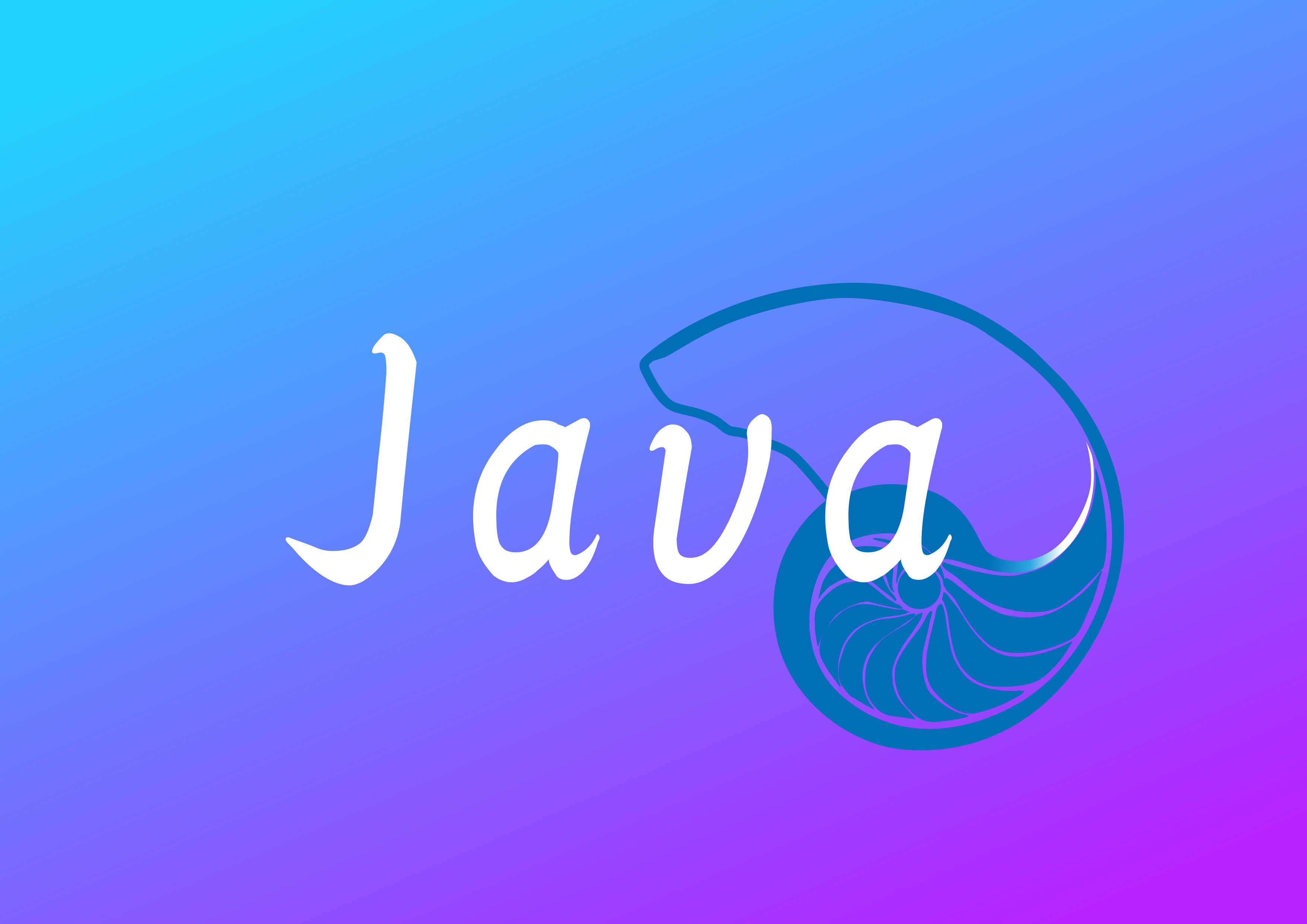什么是 OOP(面向对象编程)?
面向对象编程是一种通过创建对象来解决问题的方法。
OOP 中的术语
| 术语 | 解释 | OOP 支柱 |
|---|---|---|
Inheritance(继承) |
一个类从另一个类获取属性和方法 | 是 |
Polymorphism(多态) |
不同对象可以以相同的方式响应相同的消息 | 是 |
Encapsulation(封装) |
将数据和方法封装在对象内部,保护数据不被直接访问 | 是 |
Abstraction(抽象) |
隐藏内部细节,仅展示必要的信息 | 是 |
Class(类) |
创建对象的模板或蓝图 | 否 |
Object(对象) |
类的实例,包含属性和方法 | 否 |
Attribute(属性) |
对象的特征或状态 | 否 |
Method(方法) |
对象的行为或功能 | 否 |
Constructor(构造函数) |
用于初始化对象的特殊方法 | 否 |
Message Passing(消息传递) |
对象之间通过方法调用进行通信 | 否 |
Prototypes(原型) 和 proto(原型链)
JavaScript 的对象有一个特殊的属性叫 prototype,它要么是 null,要么引用另一个对象。
当我们尝试从一个对象读取某个属性,而该属性不存在时,JavaScript 会自动从原型中获取该属性。这种机制被称为 原型继承。
设置原型
我们可以通过设置 __proto__ 来设置原型。如果我们从一个对象读取一个属性,该属性不存在于对象中但存在于原型中,JavaScript 会从原型中获取它。如果对象中有一个方法,它会从对象中调用。如果对象中缺少该方法而原型中存在,它将从原型中调用。
示例:
// 这个对象会正常运行
let p = {
run : () => {
console.log("run")
}
}
p.run() // 输出: run
// 现在定义另一个对象
let a = {
name : "subham"
}
a.run() // 输出: TypeError: a.run is not a function(a 没有 run 方法)
// 使用 __proto__ 设置原型
let b = {
name : "subham"
}
b.__proto__ = p // 将 p 设为 b 的原型
b.run() // 输出: 运行(继承自原型 p 的 run 方法)简单来说,您可以在一个对象中继承另一个对象的原型。这被称为 原型继承。
// 这个对象会正常运行
let p = {
run : () => {
console.log("p run")
}
}
p.run() // 输出: p run
// 现在定义另一个对象并设置原型
let b = {
run : () => {
console.log("b run")
}
}
b.__proto__ = p // 将 p 设为 b 的原型
b.run() // 输出: b run如果一个属性或方法已经存在于对象中,JavaScript 会使用该对象中的属性或方法。如果它不存在于对象中但存在于原型中,JavaScript 会从原型中获取。在这个例子中,由于 b 对象已经定义了 run 方法,因此会输出 'b run'。
Classes(类) 和 Object(对象)
- 在面向对象编程中,类 是一种特定对象中方法和变量的模板定义。
- 在面向对象编程中,对象 是类(或结构体)的具体实例,并已在内存中分配。
示例:
// 定义类
class GoogleForm {
submit() {
console.log(this.name + " " + this.roll + " 表单已提交")
}
cancel() {
console.log(this.name + " " + this.roll + " 表单已取消")
}
fill(given_name , roll) {
this.name = given_name
this.roll = roll
}
}
// 创建对象
const student1Form = new GoogleForm()
student1Form.fill("Rahul" , 24) // 学生1填写表单
const student2Form = new GoogleForm()
student2Form.fill("Raj" , 25) // 学生2填写表单
student2Form.cancel() // 学生2取消表单
student1Form.submit() // 学生1提交表单
student2Form.submit() // 学生2提交表单Constructor(构造函数)
在 JavaScript 中,构造函数 是一个特殊的函数,用于创建并初始化对象,设置对象的初始状态和属性。
假设他们忘记填写表单就点击提交按钮,程序会返回 undefined!
class Form {
submit() {
console.log(this.name + ": 您的表单已提交,车次为: " + this.trainno)
}
cancel() {
console.log(this.name + ": 此表单已取消,车次为: " + this.trainno)
this.trainno = 0
}
fill(givenname, trainno) {
this.name = givenname
this.trainno = trainno
}
}
let myForm1 = new Form()
let myForm2 = new Form()
// myForm1.fill("Gaurav", 1234)
// myForm2.fill("Rahul", 5678)
myForm1.submit()
myForm2.submit()
myForm2.cancel()
// 输出: undefined: 您的表单已提交,车次为: undefined
// 输出: undefined: 您的表单已提交,车次为: undefined
// 输出: undefined: 此表单已取消,车次为: undefined现在创建构造函数:
class Form {
constructor() {
// 构造函数初始化默认的 name 和 trainno
this.name = "Gaurav"
this.trainno = 0
}
submit() {
console.log(this.name + ": 您的表单已提交,车次为: " + this.trainno)
}
cancel() {
console.log(this.name + ": 此表单已取消,车次为: " + this.trainno)
this.trainno = 0
}
fill(givenname, trainno) {
this.name = givenname
this.trainno = trainno
}
}
let myForm1 = new Form()
let myForm2 = new Form()
// myForm1.fill("Gaurav", 1234)
// myForm2.fill("Rahul", 5678)
myForm1.submit()
myForm2.submit()
myForm2.cancel()
// 输出: Gaurav: 您的表单已提交,车次为: 0
// 输出: Gaurav: 您的表单已提交,车次为: 0
// 输出: Gaurav: 此表单已取消,车次为: 0构造函数的类型
无参构造函数:一个没有参数的构造函数。
class Example { constructor() { this.property = "default value"; // 构造函数初始化属性为默认值 } }有参构造函数:一个带有参数的构造函数。
class Example { constructor(value) { this.property = value; // 构造函数接受一个参数并初始化属性 } }拷贝构造函数:
JavaScript没有像C++或Java那样的内置拷贝构造函数。然而,你可以通过创建一个方法来复制对象。class Example { constructor(value) { this.property = value; // 构造函数接受一个参数并初始化属性 } // 拷贝方法,返回一个新的 Example 对象 copy() { return new Example(this.property); } } const original = new Example("original value"); // 创建一个原始对象 const copy = original.copy(); // 通过 copy 方法复制对象
与 C++ 等语言不同,JavaScript 没有析构函数。相反,JavaScript 依赖高效的垃圾回收机制,它会自动释放内存。
什么是析构函数?
析构函数就是一个特殊的方法,当对象不再需要的时候,它会自动被调用,用来清理一些对象占用的资源。例如,当你不再使用一个对象时,析构函数可以用来关闭文件、释放内存或清理其他占用的资源。
举例:
想象你借了一本书,当你还书的时候,你需要做一些事情,比如检查书是不是完好,记录还书日期等等。析构函数就像你还书时自动进行的这些操作。
在一些编程语言(比如
C++)中,你可以明确告诉程序什么时候应该"还书",即销毁对象。而在JavaScript中,程序会自己决定什么时候对象不再需要,并且自动处理"还书"(释放资源)的操作,这就是垃圾回收。在
JavaScript中的区别:
C++:你自己定义什么时候销毁对象,并用析构函数来清理资源。JavaScript:程序自动管理对象,不需要手动销毁,也不需要析构函数,因为有自动的垃圾回收机制。
Inheritance(继承)
一个类从另一个类继承属性和特性的能力称为继承。
如果你不知道什么是继承:
class Animal {
constructor(name, color, age) {
this.name = name;
this.color = color;
this.age = age;
}
run() {
console.log(this.name + ' 正在跑');
}
shout() {
console.log(this.name + ' 正在叫');
}
sleep() {
console.log(this.name + ' 正在睡觉');
}
}
// 如果你是新手开发者,可能会这样做
class Monkey {
constructor(name, color) {
this.name = name;
this.color = color;
}
run() {
console.log(this.name + ' 正在跑');
}
shout() {
console.log(this.name + ' 正在叫');
}
sleep() {
console.log(this.name + ' 正在睡觉');
}
eatBanana() {
console.log(this.name + ' 正在吃香蕉');
}
}
const animal_1 = new Monkey('猴子', '棕色', 2);
const animal_2 = new Animal('驴', '白色', 3);
animal_1.eatBanana();
animal_2.shout();如果你知道:
// 父类 - 基类
class Animal {
constructor(name, color , age) {
this.name = name
this.color = color
this.age = age
}
run() {
console.log(this.name + ' 正在跑')
}
shout() {
console.log(this.name + ' 正在叫')
}
sleep() {
console.log(this.name + ' 正在睡觉')
}
}
// 子类 - 派生类
class Monkey extends Animal {
eatBanana() {
console.log(this.name + ' 正在吃香蕉')
}
// 你也可以添加新的方法
hide() {
console.log(this.name + ' 正在躲藏')
}
}
const animal_1 = new Monkey('猴子', '棕色', 2)
const animal_2 = new Animal('驴', '白色', 3)
animal_1.eatBanana()
animal_1.run()
animal_1.hide()
animal_2.shout()构造函数的类型
单继承:一个子类继承一个父类。
class Animal { run() { console.log("动物正在跑"); } } class Dog extends Animal { bark() { console.log("狗正在叫"); } } const dog = new Dog(); dog.run(); // 输出: 动物正在跑 dog.bark(); // 输出: 狗正在叫多层继承:一个类继承自另一个类,而这个类又继承自另一个父类。
class Animal { eat() { console.log("动物正在吃"); } } class Mammal extends Animal { sleep() { console.log("哺乳动物正在睡觉"); } } class Dog extends Mammal { bark() { console.log("狗正在叫"); } } const dog = new Dog(); dog.eat(); // 输出: 动物正在吃 dog.sleep(); // 输出: 哺乳动物正在睡觉 dog.bark(); // 输出: 狗正在叫层次继承:多个类继承自同一个父类。
class Animal { sound() { console.log("动物发出声音"); } } class Dog extends Animal { bark() { console.log("狗在叫"); } } class Cat extends Animal { meow() { console.log("猫在喵喵叫"); } } const dog = new Dog(); const cat = new Cat(); dog.sound(); // 输出: 动物发出声音 dog.bark(); // 输出: 狗在叫 cat.sound(); // 输出: 动物发出声音 cat.meow(); // 输出: 猫在喵喵叫多重继承:一个子类同时继承多个父类的属性和方法。(
JavaScript不直接支持多重继承,但可以通过mixin实现类似的效果。)// Mixin 1: 可以飞行 const CanFly = (Base) => class extends Base { fly() { console.log(this.name + " 能飞"); } }; // Mixin 2: 可以游泳 const CanSwim = (Base) => class extends Base { swim() { console.log(this.name + " 能游泳"); } }; // 基类 Animal class Animal { constructor(name) { this.name = name; } move() { console.log(this.name + " 正在移动"); } } // 通过混合多个 Mixin 实现多重继承 class Duck extends CanFly(CanSwim(Animal)) { constructor(name) { super(name); } quack() { console.log(this.name + " 在嘎嘎叫"); } } const duck = new Duck("唐老鸭"); duck.move(); // 输出: 唐老鸭 正在移动 duck.fly(); // 输出: 唐老鸭 能飞 duck.swim(); // 输出: 唐老鸭 能游泳 duck.quack(); // 输出: 唐老鸭 在嘎嘎叫混合继承:结合多种继承方式,通常是多层继承和多重继承的混合形式。由于
JavaScript不支持多重继承,混合继承通常通过组合或mixin来实现。// 基类 Shape class Shape { area() { console.log("显示形状的面积"); } } // 子类 Triangle 继承自 Shape class Triangle extends Shape { area(h, b) { console.log((1/2) * b * h); } } // Mixin 添加 perimeter 方法 const mixin = (Base) => class extends Base { perimeter() { console.log("计算周长"); } }; // EquilateralTriangle 继承自 Triangle,并通过 Mixin 添加 perimeter class EquilateralTriangle extends mixin(Triangle) { constructor(side) { super(); this.side = side; } // 重写 area 方法 area() { console.log((Math.sqrt(3) / 4) * this.side * this.side); } } const equilateralTriangle = new EquilateralTriangle(5); equilateralTriangle.area(); // 输出: 10.825317547305481 equilateralTriangle.perimeter(); // 输出: 计算周长
方法重写
如果在父类和子类中都定义了相同的方法,那么子类的方法会覆盖父类的方法。
一般情况下:
class human {
constructor(name, age, body_type) {
this.name = name;
this.age = age;
this.body_type = body_type;
}
getName() {
console.log("这个人的名字是: ", this.name);
}
getAge() {
console.log("这个人的年龄是: ", this.age);
}
getBodyType() {
console.log("这个人的体型是: ", this.body_type);
}
}
class student extends human {}
const student_1 = new student("Subham", 24, "瘦");
student_1.getAge(); // 这个人的年龄是: 24super 关键字 - 类型
super 关键字用于调用父类的构造函数,以访问其属性和方法。
重写构造函数
class Human {
constructor(name, age, bodyType) {
this.name = name;
this.age = age;
this.bodyType = bodyType;
}
getName() {
console.log("这个人名为:", this.name);
}
getAge() {
console.log("这个人的年龄是:", this.age);
}
getBodyType() {
console.log("这个人的体型是:", this.bodyType);
}
}
class Student extends Human {
constructor() {
super("Rahul", 80, "肥胖");
}
}
const student1 = new Student();
student1.getName(); // 输出: 这个人名为: Rahul重写方法
class Human {
constructor(name, age, bodyType) {
this.name = name;
this.age = age;
this.bodyType = bodyType;
}
getName() {
console.log("这个人的名字是:", this.name);
}
getAge() {
console.log("这个人的年龄是:", this.age);
}
getBodyType() {
console.log("这个人的体型是:", this.bodyType);
}
}
class Student extends Human {
constructor() {
super("Rahul", 80, "胖");
}
// 使用 super 关键字在子类中重写方法
getAge() {
super.getAge();
console.log("这个学生的年龄是:", 20);
}
}
const student1 = new Student();
student1.getAge(); // 输出: 这个人的年龄是: 80
// 输出: 这个学生的年龄是: 20方法重写的关键点
相同的方法名:子类中的方法必须与父类中的方法同名。
相同的参数:子类中的方法必须具有与父类方法相同的参数列表。
IS-A关系:方法重写仅发生在具有IS-A关系(继承)的两个类之间。IS-A关系指的是类与类之间的继承关系。当一个类是另一个类的子类时,可以说这个子类“是”父类的一个特例。例如,学生类可以被视为人类的一个特例,因此可以说“学生是人”。这种关系使得子类可以继承父类的属性和方法,从而实现代码的复用和扩展。访问修饰符:重写的方法可以具有较低限制的访问修饰符,但不能具有更高限制的访问修饰符。
超类关键字:您可以使用
super关键字来调用父类中被重写的方法。
额外说明
说明 1
class human {
constructor() {
console.log("人类类的构造函数");
}
eat() {
console.log("人类可以吃东西");
}
}
class student extends human {}
const student_1 = new student();
student_1.eat();
// 输出:
// 人类类的构造函数
// 人类可以吃东西如果你在子类中没有显式定义构造函数,JavaScript 会自动为你创建一个构造函数,该构造函数会使用 super() 调用父类的构造函数。
像这样:
class human {
constructor() {
console.log("人类类的构造函数")
}
eat() {
console.log("人类可以吃东西")
}
}
class student extends human {
constructor(...arg) {
super(...arg);
}
}
const student_1 = new student()
student_1.eat()
// 输出:
// 人类类的构造函数
// 人类可以吃东西说明 2
class human {
constructor() {
console.log("人类类的构造函数")
}
eat() {
console.log("人类可以吃东西")
}
}
class student extends human {
constructor() {
console.log("这是学生类的构造函数")
}
}
const student_1 = new student();
student_1.eat();
// 输出:
// 这是学生类的构造函数
// ReferenceError: Must call super constructor in derived class before accessing 'this' or returning from derived constructor你必须像这样使用 super 关键字:
class human {
constructor() {
console.log("人类类的构造函数")
}
eat() {
console.log("人类可以吃东西")
}
}
class student extends human {
constructor() {
super();
console.log("这是学生类的构造函数")
}
}
const student_1 = new student();
student_1.eat();
// 输出:
// 人类类的构造函数
// 这是学生类的构造函数
// 人类可以吃东西说明 3
class human {
constructor(name) {
console.log("人类类的构造函数", name);
this.name = name;
}
eat() {
console.log("人类可以吃东西");
}
}
class student extends human {
constructor(name) {
this.name = name; // 不允许
super();
console.log("学生类的构造函数", name);
}
}
const student_1 = new student("subham");
student_1.eat();
// 输出:
// ReferenceError: Must call super constructor in derived class before accessing 'this' or returning from derived constructor在调用 super 关键字之后,你就可以使用 this :
class human {
constructor(name) {
console.log("人类类的构造函数", name)
this.name = name
}
eat() {
console.log("人类可以吃东西")
}
}
class student extends human {
constructor(name) {
super() // 这里调用父类构造函数
this.name = name
console.log("学生类的构造函数", name)
}
}
const student_1 = new student("subham")
student_1.eat()
// 输出:
// 人类类的构造函数 undefined
// 学生类的构造函数 subham
// 人类可以吃东西方法重载
在一个类中拥有两个或多个具有相同名称但参数(或形参)不同的方法(或函数)。
我们可以在 JavaScript 中重载一个函数吗?
在 JavaScript 中,方法重载(如同其他一些语言,比如 Java)并不被原生支持。这意味着你不能在同一个类中定义多个名称相同但参数不同的方法。不过,你可以通过在单个方法内检查参数的数量和类型来实现类似的功能。
你不能在 JavaScript 中这样做:
class Calculator {
add(a, b) {
return a + b;
}
add(a, b, c) {
return a + b + c;
}
}
const calc = new Calculator();
console.log(calc.add(1, 2)); // 这将返回 NaN,因为第一个 add 方法被覆盖如果你想的话,你可以通过这样实现:
class Calculator {
add(...args) {
if (args.length > 0) {
return args.reduce((sum, num) => sum + num, 0);
} else {
throw new Error("参数无效:至少需要一个参数");
}
}
}
const calc = new Calculator();
console.log(calc.add(1, 2)); // 输出: 3
console.log(calc.add(1, 2, 3, 4)); // 输出: 10
console.log(calc.add()); // Error: 参数无效:至少需要一个参数访问修饰符
访问修饰符是一种用于设置类成员可访问性的关键字。
访问修饰符的类型
Public: 被声明为公共的成员可以从任何其他类中访问。Protected: 被声明为受保护的成员可以在同一类及其子类中访问。Private: 被声明为私有的成员只能在同一个类中访问。
可访问性表
| 修饰符 | 父类 | 子类 | 外部类 |
|---|---|---|---|
Public(公共) |
✔️ | ✔️ | ✔️ |
Protected(受保护) |
✔️ | ✔️ | ❌ |
Private(私有) |
✔️ | ❌ | ❌ |
示例
公有成员
公有成员可以从任何地方访问。
class Parent { publicProperty = "我是公共的"; publicMethod() { return "这是一个公共方法"; } } class Child extends Parent { useParentPublic() { console.log(this.publicProperty); console.log(this.publicMethod()); } } const parent = new Parent(); const child = new Child(); console.log(parent.publicProperty); // 输出: 我是公共的 console.log(parent.publicMethod()); // 输出: 这是一个公共方法 child.useParentPublic(); // 输出: // 我是公共的 // 这是一个公共方法在这个示例中,
publicProperty和publicMethod可以在以下位置访问:- 在
Parent类内部 - 在
Child类内部 - 在任何类外部
- 在
受保护的成员(模拟)
在
JavaScript中,我们通常使用下划线作为前缀来表示受保护的成员。它们在技术上仍然是公共的,但开发者约定不要在类或其子类之外直接访问它们。class Parent { _protectedProperty = "我是受保护的"; _protectedMethod() { return "这是一个受保护的方法"; } } class Child extends Parent { useParentProtected() { console.log(this._protectedProperty); console.log(this._protectedMethod()); } } const parent = new Parent(); const child = new Child(); child.useParentProtected(); // 输出: // 我是受保护的 // 这是一个受保护的方法 // 这些方法有效,但违反了约定: console.log(parent._protectedProperty); console.log(parent._protectedMethod());在这种情况下:
_protectedProperty和_protectedMethod可以在Parent类中访问- 它们在
Child类中也可以访问(继承) - 从技术上讲,它们在类外部也可以访问,但这违反了约定
私有成员
私有成员是真正私有的,只能在定义它们的类内部访问。
class Parent { #privateProperty = "我是私有的"; #privateMethod() { return "这是一个私有方法"; } usePrivate() { console.log(this.#privateProperty); console.log(this.#privateMethod()); } } class Child extends Parent { tryToUseParentPrivate() { // 如果取消注释,这些操作将导致错误: // console.log(this.#privateProperty); // console.log(this.#privateMethod()); } } const parent = new Parent(); const child = new Child(); parent.usePrivate(); // 输出: // 我是私有的 // 这是一个私有方法 // 如果取消注释,这些操作将导致错误: // console.log(parent.#privateProperty); // console.log(parent.#privateMethod()); // child.tryToUseParentPrivate();在这种情况下:
#privateProperty和#privateMethod只能在Parent类内部访问- 它们在
Child类中不可访问,即使Child继承自Parent - 它们在类的外部完全不可访问
关键要点
- 公有成员(默认)在任何地方都可以访问。
- 受保护的成员(约定使用下划线
_)可以在类和子类中访问,但不应在类外部访问(尽管从技术上讲是可以的)。 - 私有成员(使用
#)仅在定义类内可访问,无法在子类或外部访问。 - 使用受保护的成员时,它们在可访问性方面表现得像公共成员,但开发者约定将其视为受保护的成员来使用。
- 只有使用
#语法的私有成员才能实现真正的隐私和封装。
Static
static 关键字为类定义一个静态方法或字段。
静态方法是属于类本身的方法,而不是属于类的具体实例的方法。
class Animal {
constructor(name) {
this.name = Animal.capitalize(name);
}
static capitalize(name) {
return name.charAt(0).toUpperCase() + name.slice(1);
}
walk() {
console.log(`动物 ${this.name} 正在走路`);
}
}
const animal = new Animal("lion");
animal.walk(); // 输出: 动物 Lion 正在走路
console.log(Animal.capitalize("elephant")); // 输出: Elephant关键要点:
capitalize方法使用static关键字声明为静态方法。- 它是在类上调用的(如
Animal.capitalize),而不是在实例上调用的。 - 可以在构造函数或其他方法中使用类名来调用它。
继承与静态方法
静态方法可以被子类继承:
class Animal {
constructor(name) {
this.name = Animal.capitalize(name);
}
static capitalize(name) {
return name.charAt(0).toUpperCase() + name.slice(1);
}
walk() {
console.log(`动物 ${this.name} 正在走路`);
}
}
class Human extends Animal {
static greet() {
console.log("你好!");
}
}
const human = new Human("john");
human.walk(); // 输出: 动物 John 正在走路
console.log(Human.capitalize("sarah")); // 输出: Sarah
Human.greet(); // 输出: 你好!注意:
Human类继承了Animal类的静态方法capitalize。Human也可以定义自己的静态方法,例如greet。
从非静态方法中调用静态方法
你可以从非静态方法中调用静态方法,但需要使用类名来调用:
class Calculator {
static add(a, b) {
return a + b;
}
multiply(a, b) {
// 在非静态方法中使用静态方法
return Calculator.add(a, 0) * b;
}
}
const calc = new Calculator();
console.log(calc.multiply(3, 4)); // 输出: 12
console.log(Calculator.add(5, 6)); // 输出: 11静态方法与实例方法的区别
以下是一个对比来说明它们之间的区别:
class MyClass {
static staticMethod() {
return "我是一个静态方法";
}
instanceMethod() {
return "我是一个实例方法";
}
}
console.log(MyClass.staticMethod()); // 输出: 我是一个静态方法
const obj = new MyClass();
console.log(obj.instanceMethod()); // 输出: 我是一个实例方法
// 这将抛出错误:
// console.log(MyClass.instanceMethod());
// 这也将抛出错误:
// console.log(obj.staticMethod());静态方法的使用场景
- 实用工具函数:不需要对象状态的方法。
- 工厂方法:用于创建具有特殊属性的实例。
- 缓存或固定配置:用于存储所有实例共享的数据。
工厂方法示例:
class Car {
constructor(make, model) {
this.make = make;
this.model = model;
}
static createElectricCar(make, model) {
const car = new Car(make, model);
car.type = 'Electric';
return car;
}
}
const tesla = Car.createElectricCar("Tesla", "Model S");
console.log(tesla); // 输出: Car { make: 'Tesla', model: 'Model S', type: 'Electric' }关键要点
- 静态方法是在类上定义的,而不是在实例上定义的。
- 它们通过类名调用:
ClassName.methodName()。 - 它们可以被子类继承。
- 它们不能直接访问实例属性或方法。
- 它们适用于实用工具函数、工厂方法以及管理类级别的数据。
- 你不能在实例上调用静态方法,也不能在类上调用实例方法。
Getter 和 Setter
Getter 和 Setter 是允许你分别获取和设置对象值的函数。
class human {
constructor(name, age) {
this._name = name;
this._age = age;
}
get getName() {
return this._name;
}
set setName(name) {
this._name = name;
}
get getAge() {
return this._age;
}
set setAge(age) {
this._age = age;
}
}
const person = new human("", 0);
person.setName = "Raj";
person.setAge = 25;
console.log(person.getName);
console.log(person.getAge);
// 输出:
// Raj
// 25instanceOf 操作符
检查一个对象是否是某个类、子类或接口的实例。
class human {
constructor(name, age) {
this.name = name;
this.age = age;
}
get getName() {
return this.name;
}
set setName(name) {
this.name = name;
}
get getAge() {
return this.age;
}
set setAge(age) {
this.age = age;
}
}
const person = new human("", 0);
person.setName = "Raj";
person.setAge = 25;
console.log(person.getName); // 输出: Raj
console.log(person.getAge); // 输出: 25
const person1 = "Subham"
console.log( person instanceof human) // 输出: true
console.log( person1 instanceof human) // 输出: false它对于子类也会返回 true:
class human {
constructor(name, age) {
this.name = name;
this.age = age;
}
get getName() {
return this.name;
}
set setName(name) {
this.name = name;
}
get getAge() {
return this.age;
}
set setAge(age) {
this.age = age;
}
}
class Coder extends human {
constructor(name, age, language) {
super(name, age);
this.language = language;
}
}
const person = new human("", 0);
const subham = new Coder("subham", 22, "java");
person.setName = "Raj";
person.setAge = 25;
console.log( person instanceof human) // 输出: true
console.log( subham instanceof human) // 输出: true封装
封装是一种限制对对象某些组件直接访问的方式。
class BankAccount {
#balance; // 私有字段
constructor(initialBalance) {
this.#balance = initialBalance;
}
deposit(amount) {
if (amount > 0) {
this.#balance += amount;
}
}
getBalance() {
return this.#balance;
}
}
const account = new BankAccount(1000);
account.deposit(500);
console.log(account.getBalance()); // 1500
// console.log(account.#balance); // SyntaxError: Private field '#balance' must be declared in an enclosing class// 封装
const user = {
firstName: "John",
lastName: "Doe",
age: 25,
getAgeYear: function() {
return new Date().getFullYear() - this.age; // 计算出生年份
}
}
console.log(user.getAgeYear()); // 输出:1999 (当前年份为2024)多态
多态意味着“多种形式”,当我们有许多通过继承相互关联的类时,就会出现多态。
// 父类
class Animal {
makeSound() {
console.log("动物发出声音");
}
}
// 子类
class Dog extends Animal {
makeSound() {
console.log("狗在叫");
}
}
class Cat extends Animal {
makeSound() {
console.log("猫在叫");
}
}
// 演示多态的函数
function animalSound(animal) {
animal.makeSound();
}
// 使用示例
const animal = new Animal();
const dog = new Dog();
const cat = new Cat();
animalSound(animal); // 输出: 动物发出声音
animalSound(dog); // 输出: 狗在叫
animalSound(cat); // 输出: 猫在叫抽象
抽象是隐藏复杂的实现细节,只展示对象必要功能的概念。
// 抽象类
class Vehicle {
constructor(brand) {
this.brand = brand;
}
// 抽象方法
start() {
throw new Error("必须实现 'start()' 方法。");
}
getBrand() {
return this.brand;
}
}
// 具体类
class Car extends Vehicle {
start() {
return `${this.brand} 车正在启动...`;
}
}
// 使用示例
const myCar = new Car("丰田");
console.log(myCar.getBrand()); // 输出: 丰田
console.log(myCar.start()); // 输出: 丰田车正在启动...













